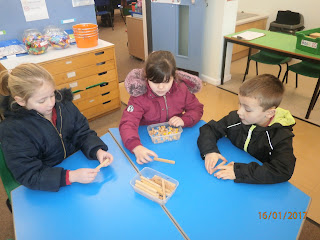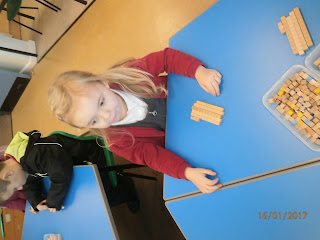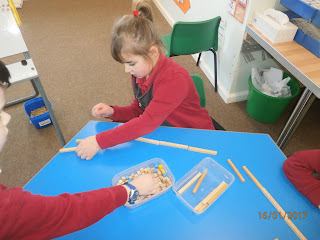Understanding place value means that your child will know what each digit in a number represents.
For example, lets look at the number 27.
The child here sees the digits 2 and 7 and can say 'this is 27', but the understanding of the size of the number that is written is not there.
Once the children understand place value, they will be able to explain that actually, 27 is made up of 2 tens and 7 units (or 'ones' - we use these terms interchangeably) as below...
Note that in this example, the difference in tens and units is apparent. I used Base 10 in this example, but Numicon works too...
How to help your child at home
- You could play 'guess my number', which we play in school. You think of a number (for example 16) and give the clue 'my number has one ten and 6 units'. Your child then works out the number based on the clue.
- You could print off your own Base 10 (the sticks and cubes) and make numbers together just as in the example above. http://lrt.ednet.ns.ca/PD/BLM/pdf_files/base-10_blocks/base10_all.pdf
- You could even make your own Base 10 to practise with. All you'd need is something you can split into ones and sets of ten (Lego pieces, stacking cubes, kebab sticks and play-doh balls are a few ideas off the top of my head!
Please do feel free to come into class any day after school (Tuesdays I run sketch club so may need 5 minutes or so to get them started) and I'd be more than happy to run through this with you. Sometimes reading it just isn't the same!
Miss Gallagher
















No comments:
Post a Comment